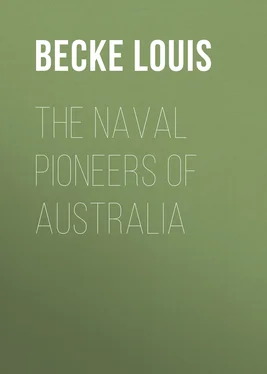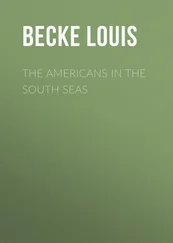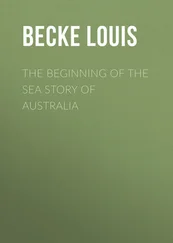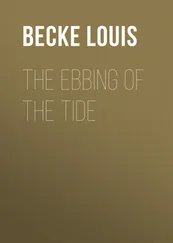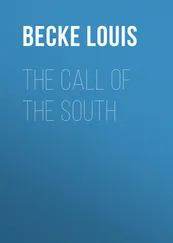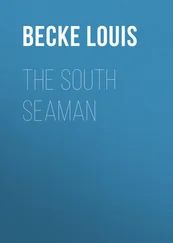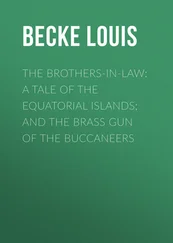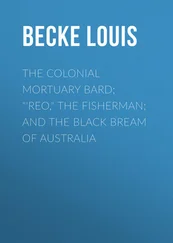Louis Becke - The Naval Pioneers of Australia
Здесь есть возможность читать онлайн «Louis Becke - The Naval Pioneers of Australia» — ознакомительный отрывок электронной книги совершенно бесплатно, а после прочтения отрывка купить полную версию. В некоторых случаях можно слушать аудио, скачать через торрент в формате fb2 и присутствует краткое содержание. Жанр: foreign_prose, literature_19, foreign_antique, на английском языке. Описание произведения, (предисловие) а так же отзывы посетителей доступны на портале библиотеки ЛибКат.
- Название:The Naval Pioneers of Australia
- Автор:
- Жанр:
- Год:неизвестен
- ISBN:нет данных
- Рейтинг книги:4 / 5. Голосов: 1
-
Избранное:Добавить в избранное
- Отзывы:
-
Ваша оценка:
- 80
- 1
- 2
- 3
- 4
- 5
The Naval Pioneers of Australia: краткое содержание, описание и аннотация
Предлагаем к чтению аннотацию, описание, краткое содержание или предисловие (зависит от того, что написал сам автор книги «The Naval Pioneers of Australia»). Если вы не нашли необходимую информацию о книге — напишите в комментариях, мы постараемся отыскать её.
The Naval Pioneers of Australia — читать онлайн ознакомительный отрывок
Ниже представлен текст книги, разбитый по страницам. Система сохранения места последней прочитанной страницы, позволяет с удобством читать онлайн бесплатно книгу «The Naval Pioneers of Australia», без необходимости каждый раз заново искать на чём Вы остановились. Поставьте закладку, и сможете в любой момент перейти на страницу, на которой закончили чтение.
Интервал:
Закладка:
No doubt there are families who have, so to speak, specialized their traditions for generations; and a naval family's traditions for the last two centuries would make a most entertaining book. Suppose, for instance, there were living at Portsmouth a man whose family for generations had prided itself on some one of its members having shaken hands with all the great sailors who at some time or other in their careers must have sailed from Spithead. This man could tell us how his father had actually shaken hands with Nelson.
There died in February, 1898, in Melbourne, Australia, Lieutenant Pascoe, son of Nelson's flag-lieutenant at Trafalgar, so that the first proposition is established. Now Nelson's Pascoe could easily have been patted on the head by Cook, and the father of any of Cook's men could easily have sailed with Dampier. Looked at in this way, it does not seem difficult to span the gulfs between each of these naval epochs, and if one compares Dampier's Roebuck and her crew with Cook's Endeavour and her crew and with the ships and seamen of Nelson's time, it still seems easy enough; but between us and them steam and iron have come, and we are as far apart from those others as the Martians are from us.
At the time when Cook started on his voyage England had for several years been engaged in, and was almost constantly at, naval war. From the French and Spanish prizes we got many valuable hints in the designing of ships, and our builders improved upon them with the best workmanship and materials in the world, so that the warships of Cook's time differed little from, and in many cases were, the hulks which, until very recent years, lay in our naval seaports. It ought not to be necessary to remind readers that Nelson's Victory , still afloat in Portsmouth harbour, was launched in 1765.
The sailors were for the most part pressed men, but there was a notable difference between them and the seamen of Dampier's time. They were, and remained for long after, wild, improvident, overgrown children such as the nautical novelists who wrote a few years later 1769have pictured them; but the lawless rascals who manned king's ships or were pirates by turns, as fortune provided, were rapidly dying out, and veterans of the Spanish main were mostly to be found spending the evening of their days spinning yarns of treasure islands to the yokels of the village alehouse.
One of the causes which led to this improvement in the class of seamen was the disgraceful behaviour of the crew of the Wager , a ship of Anson's squadron, when she was lost off the Horn in 1740. A good deal of the trouble was owing to the then state of the law, by which the pay of and control over a ship's company ceased upon her wreck. The law was so amended as to enlist seamen until regularly discharged from the service by the captain of the ship under the orders of the Admiralty.
The food of sailors and the accommodation provided for them were little, if any, better than these things had been fifty years before—for the matter of that than they remained for fifty years later, and to the shame of those responsible, than the food still is in many merchant ships, for even now occasionally we hear of cases of scurvy on shipboard—a disease which Cook, over 120 years ago, avoided, though voyaging in such a manner as nowadays is unknown.
But the most important change that had come to the sea service was in the methods of finding a ship's position at sea. Hadley's sextant was in use in 1731, Harrison's chronometer in 1762, and five years later the first number of the Nautical Almanac was published, so that when Cook sailed longitude was no longer found by rule of thumb, and the great navigator, more than any other man, was able to and did, prove the value of these discoveries.
In 1764 Byron, who had been a midshipman on the Wager , sailed as commodore of an expedition consisting of two ships, the Dolphin and the Tamar , to make discoveries in the Southern Hemisphere. This voyage of discovery was the first English scientific expedition since that of the Roebuck . Byron returned in 1766 without touching at New Holland, his principal discovery being the Falkland Islands. Three months after his return another expedition sailed under the command of Wallis in the Dolphin , and with Carteret in the Swallow . The voyage resulted in many minor discoveries, but will be chiefly remembered for that of Tahiti and the story of Wallis' stay there. The Dolphin 1766-1769reached England in May, 1768. The two vessels had previously separated in Magellan Straits; and the Swallow , pursuing a different course to that taken by the Dolphin , made many discoveries, including Pitcairn Island; the Sandwich Group; and several islands in the neighbourhood of New Guinea, New Ireland and the Admiralty Islands. The Swallow reached England six months after Cook sailed. The Dolphin's return so long before her consort alarmed the Admiralty for the safety of the Swallow , and Carteret on his way home, falling in with the French scientific expedition under Bougainville, who himself had been exploring in the Pacific, was informed that two vessels had been sent out to search for him and his men, who, it was thought, might be cast away in the Straits of Magellan.
Dampier's voyage was made solely for discovery purposes; Anson, who forty years later went into the South Seas and so near to Australia as the Philippines, had gone out to fight; Byron, Wallis, and Carteret, who immediately preceded Cook, had sailed to discover and chart new countries; but Cook, who made the greatest discovery and did more important charting than all of them put together, sailed in the Endeavour for the purpose of making certain astronomical observations, and exploration was only a secondary object of the voyage. Wallis' return determined the spot where the observations could best be carried out; and, on his advice, Cook was ordered to make for Port Royal, in Tahiti.
One incident in the matter of Cook's appointment should be noted in this connection. The command of the expedition was at first intended for Dalrymple, the celebrated geographer and then chief hydrographer to the Admiralty. The precedent of Halley's command of the Paramour in 1698 had taught a lesson of the danger of giving the command of a ship to a landsman, and Sir Edward (afterwards Lord) Hawke, First Lord of the Admiralty in 1768, said, to his everlasting credit, that he would sooner cut off his right hand than sign a commission for any person who had not been bred a seaman. Dalrymple, there is little doubt, never forgave Cook for taking his place, and later on showed his resentment by an unfair statement which will be presently alluded to.
The Endeavour was what was then known as a "cat-built" ship, of 368 tons burden, a description of vessel then much used in 1768the Baltic and coal trade, having large carrying capacity, with small draught. A pencil sketch by Buchan (one of the artists who accompanied Cook) of her hull, lying at Deptford, shows the short, stumpy north-country collier, of which even nowadays one may occasionally see specimens afloat. Her great, square stern has a row of four glazed windows, alternated with ornamental panels and surrounded by scroll work, and two square ports underneath them close to the water's edge, probably for loading and unloading Baltic timber. The usual stern-lantern "tops off" the structure. There is a framework for a quarterdeck extending to the waist and the frame of a topgallant poop above this, Buchan probably having made the sketch when she was refitting for the voyage and this structure being erected for the accommodation of the officers.
Cook was appointed a first lieutenant in the navy and commander of the Endeavour on May 25th, 1768, and his ship's company, all told, numbered eighty-five persons.
Читать дальшеИнтервал:
Закладка:
Похожие книги на «The Naval Pioneers of Australia»
Представляем Вашему вниманию похожие книги на «The Naval Pioneers of Australia» списком для выбора. Мы отобрали схожую по названию и смыслу литературу в надежде предоставить читателям больше вариантов отыскать новые, интересные, ещё непрочитанные произведения.
Обсуждение, отзывы о книге «The Naval Pioneers of Australia» и просто собственные мнения читателей. Оставьте ваши комментарии, напишите, что Вы думаете о произведении, его смысле или главных героях. Укажите что конкретно понравилось, а что нет, и почему Вы так считаете.
